

Poinsettia is one of the cutest indoor plants, most striking around Christmas.
Summary of Poinsettia facts
Name – Euphorbia pulcherrima
Family – Euphorbiaceae
Type – shrub, indoor plant
Exposure – well-lit
Soil – soil mix
Foliage – evergreen – Flowering – winter
Read also:
Start planting and caring for your poinsettia as early as September for it to bloom at the end of the year.
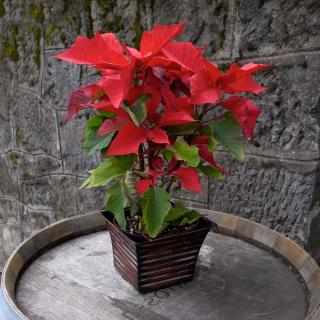 Give your plant good soil mix.
Give your plant good soil mix.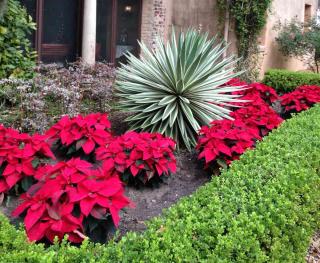 Poinsettia is a tropical plant, it only grows in specific climate parameters that include both warmth and moisture.
Poinsettia is a tropical plant, it only grows in specific climate parameters that include both warmth and moisture.Cold Limits for poinsettia : Poinsettias grow well when temperatures are mild, in a range of between 65-70°F.
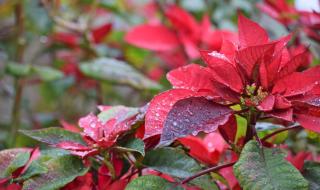 Water abundantly when the soil around your poinsettia dries up, and even wait for it to be totally dry before watering again.
Water abundantly when the soil around your poinsettia dries up, and even wait for it to be totally dry before watering again.
After the blooming, cut back the stems to more or less 2 to 4 inches (5 to 10 cm) from the base. Cutting back in this manner means snipping all the stems of the entire plant.
You’ll thus be stimulating new growth and renewed blooming for the following winter.
For more specific information about how to deal with your poinsettia after the blooming, read the paragraph dedicated to it below.
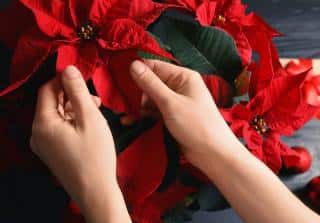 Poinsettia is a very beautiful exotic plant that is native to the tropical areas of Central America.
Poinsettia is a very beautiful exotic plant that is native to the tropical areas of Central America.
Caring for it is rather easy, whether you’re talking about planting, watering or repotting.
It is perfectly suited to living indoors. Ideal air temperatures hover between 65°F and 68°F (18°C to 20°C).
It blooms most during Christmas time and that is when it appears everywhere in flower shops and garden stores.
Rarer varieties depart from the usual red, they boast pink or even white flowers.
When growing it in a house and apartment, best is to locate it near a source of light, but without direct sun, especially during the most exposed hours of the day.
Ensure constant air moisture levels by often spraying water on its leaves. Here are other ways to increase air moisture. However, avoid getting the flowers wet.
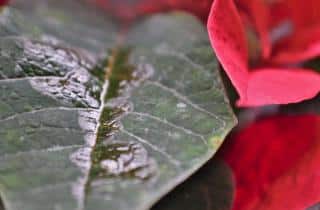 If leaves turn yellow and wither, it means the surrounding air is too dry.
If leaves turn yellow and wither, it means the surrounding air is too dry.
Best is to rest your plant on a bed of gravel, rocks or clay marbles kept constantly wet.
It’s most often due to excess water or insufficient drainage.
It is important to water only when the soil is very dry.
Your plant enters a dormant state. What is called “blooming” for poinsettia is actually a set of red or yellow leaves, because the poinsettia flowers themselves are quite insignificant.
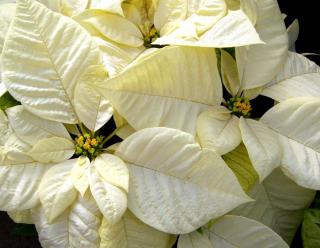 Towards the end of April, cut back stems by about ⅓, they should not be any taller than 4 inches (10 cm).
Towards the end of April, cut back stems by about ⅓, they should not be any taller than 4 inches (10 cm).Poinsettia is a plant that requires floral induction for it to bloom again in the following year.
This means it must be set in complete darkness for 20 days from 6 PM to 8 AM the next day, so that it can bloom again come Christmas. Even artificial lights would disrupt this, so either move the plant to inside a cupboard, an unused room with the blinds drawn, or simply plunk it under a carton box.
Read also:
Proceed to repot every year at the beginning of spring in order to enhance the following blooming and proper plant growth.
Poinsettia is a quintessential christmas plant but is finicky to care for, this page helps me so much, thanks a lot
thank you for sharing all this tips, my poinsettia is wonderful this year 😊